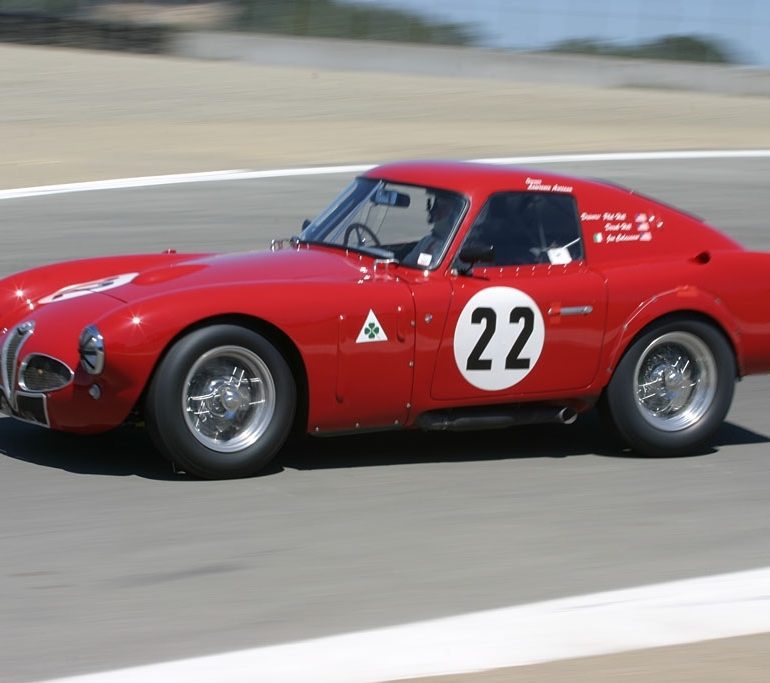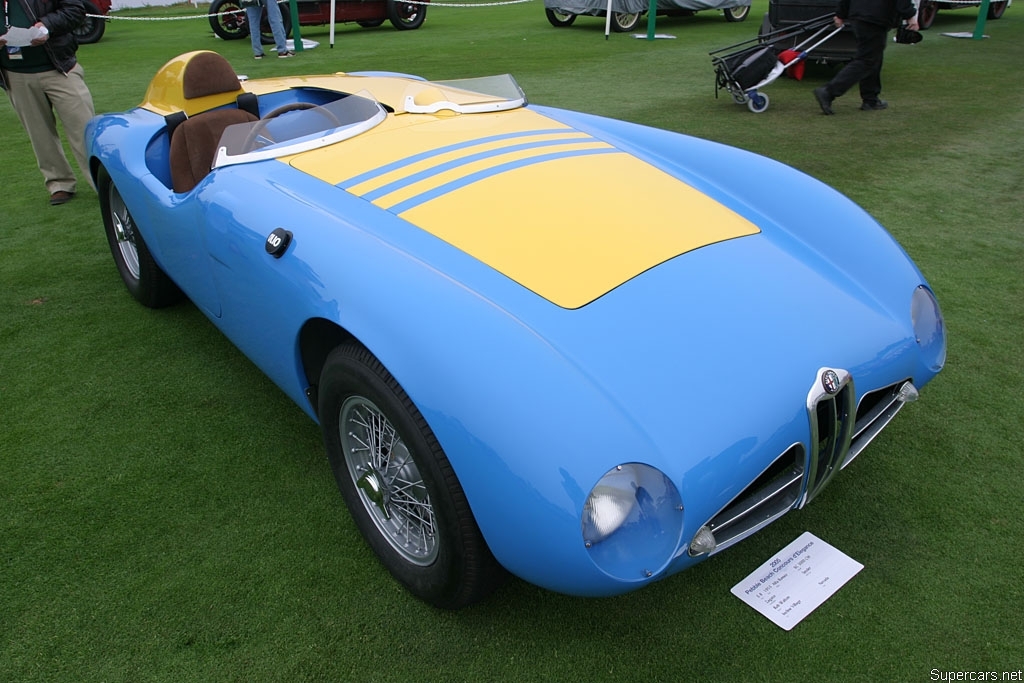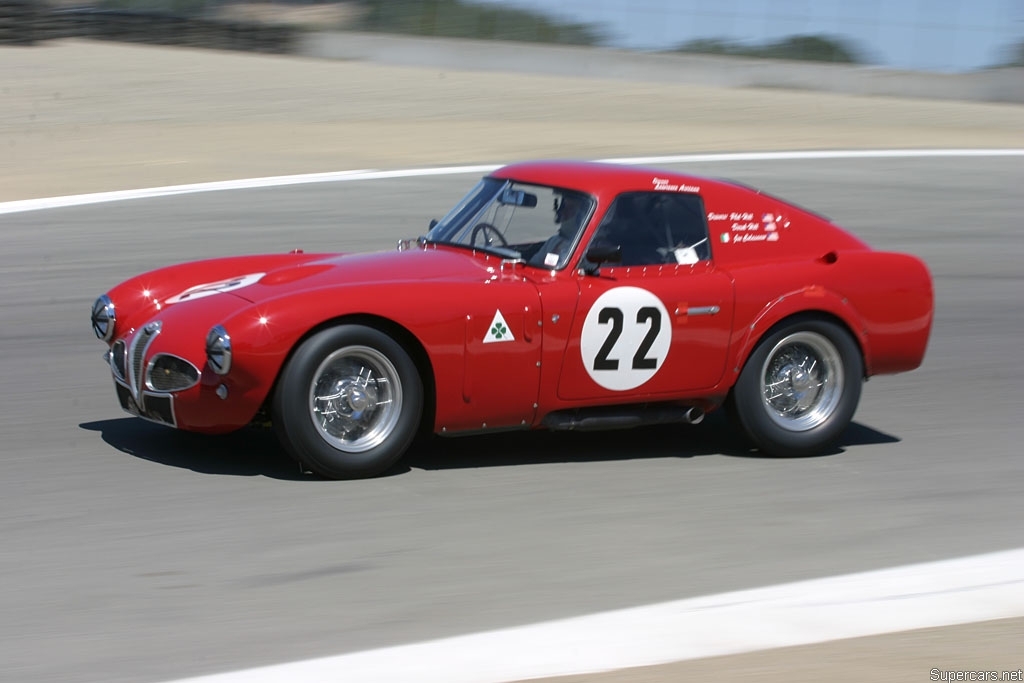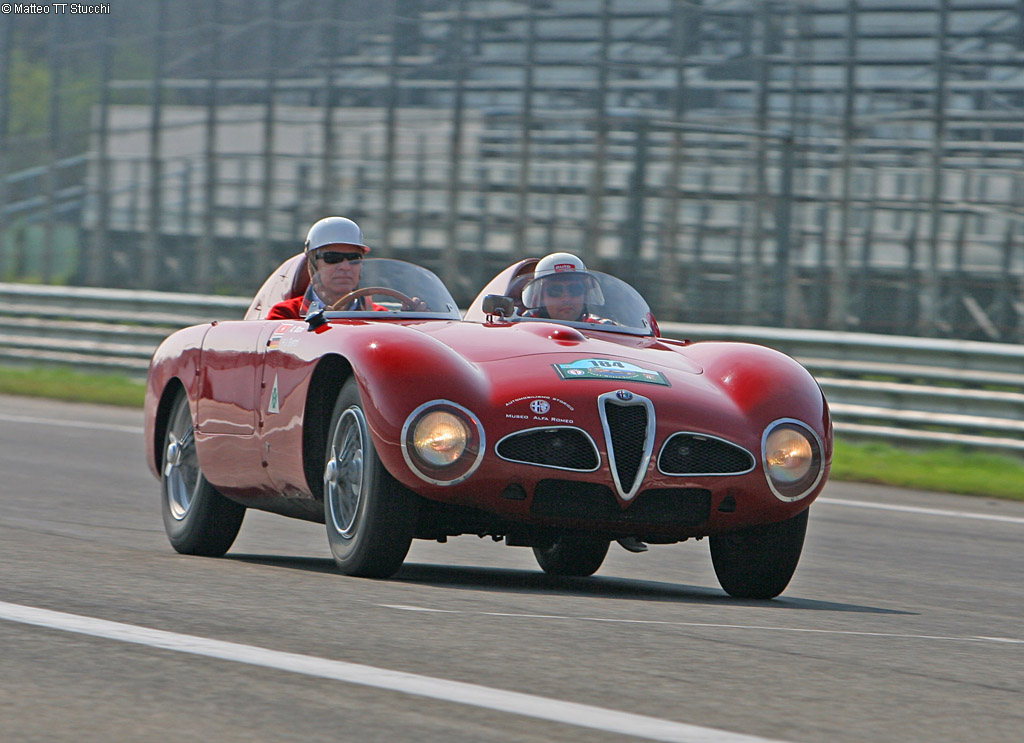1953 Alfa Romeo 6C 3000 CM
Built to contest top events like the Mille Miglia and Le Mans, the 3000 CM (Competizione Maggiorata) was the ultimate version of the 6C race cars. This design extends all the way back to the pre-war 6C 1750 and the later 6C 2500 SS race cars, but uses a 3.5-liter engine.
The 3000 CM immediately trailed the 6C 2500 Competizione, but produced nearly double the horsepower with its much larger engine. Both used the 6C’s independent suspension but in shorter wheelbase than the production cars.
Three or four coupes were made by Colli for the 1953 Mille Miglia. Despite competition from Lancia and Ferrari, one of these finished second overall. Later the cars were brought to Le Mans were they recorded the highest top speed of 154 mph down the Mulsanne. Unfortunately, all three cars retired.
After Le Mans almost all the Colli Coupes were rebodied. One was fitted with a Zagato Coupe for Joakim Bonnier. Another was send to Boano for a new body and gifted to Argentinian president Juan Peron. A third was bodied by Pininfarina into the Superflow concept car.
A few spiders were also built by Colli for Alfa Romeo and one of these won the 1953 Supercortemaggiore at the hands of Juan Manuel Fangio.
1953 Alfa Romeo 6C 3000 CM Gallery1953 Alfa Romeo 6C 3000 CM Gallery
See full 1953 Alfa Romeo 6C 3000 CM Gallery here
1361.00127-1953 Colli Spider. Retained by the Alfa Romeo museum. This is the Supercortemaggiore-winning car. Afterward, it was used as a testbed for disc brakes.
1361.00126-1953 Colli Coupe. Raced at the 1953 Mille Miglia and Le Mans. Afterward was fitted with a Boano body for Argentinian president Juan Peron. Owned by Henry Wessels who heavily crashed the car. A replica Colli Coupe body was then fabricated to go vintage racing.
1361.00125-1955 Zagato Spider. Started out as one of the original 1953 Coupes. Raced by Juan Manuel Fangio and Onofre Marimon at Le Mans. Afterward it was sold to Joakim Bonnier who crashed the car and had a Zagato Coupe body fitted. It was raced this way through to 1956 in Swedish livery. At some point the roof was removed, possibly due to cockpit cooling.
1361.00128-Pininfarina Superflow. Another chassis that was sold to Pininfarina to be bodied into a dramatic show car. It initally appeared at the 1956 Turin Motor Show as the Superflow, but was modified as the Super Flow II for the Paris Motor Show. Later the top was removed, and the car finally settled with a completely tranparent top and was called the Superflow IV.
In Detail
| submitted by | Richard Owen |
| type | Racing Car |
| built at | Italy |
| production | 5 |
| engine | Inline-6 |
| position | Front, Longitudinal |
| aspiration | Natural |
| block material | Cast Iron w/Aluminum Alloy Cylinder Head |
| valvetrain | DOHC, 2 Valves per Cyl |
| fuel feed | 6 Weber Carburetors |
| displacement | 3495 cc / 213.28 in³ |
| bore | 87 mm / 3.4 in |
| stroke | 98 mm / 3.9 in |
| compression | 8.2:1 |
| power | 205.1 kw / 275 bhp @ 6500 rpm |
| specific output | 78.68 bhp per litre |
| bhp/weight | 286.46 bhp per tonne |
| body / frame | Aluminum Body over Tubular Steel Frame |
| front brakes | Drums |
| rear brakes | Drums |
| steering | Worm & Wheel |
| f suspension | Arms w/Coil Springs, Hydraulic Shock Absorbers, Anti-Roll Bar |
| r suspension | de Dion Tube Axle w/Coil Springs, Hydraulic Shock Absorbers |
| curb weight | 960 kg / 2117 lbs |
| wheelbase | 2250 mm / 88.6 in |
| front track | 1310 mm / 51.6 in |
| rear track | 1310 mm / 51.6 in |
| top speed | ~246.18 kph / 153 mph |
| key drivers | Juan Manuel Fangio, Joakim Bonnier |
| race victories | 1953 Supercortemaggiore |











